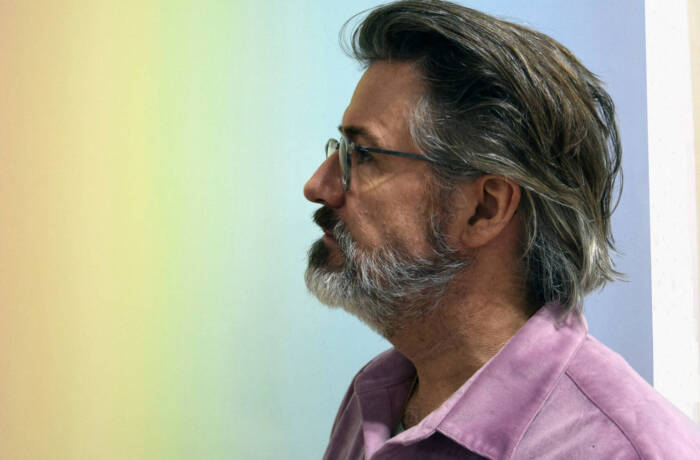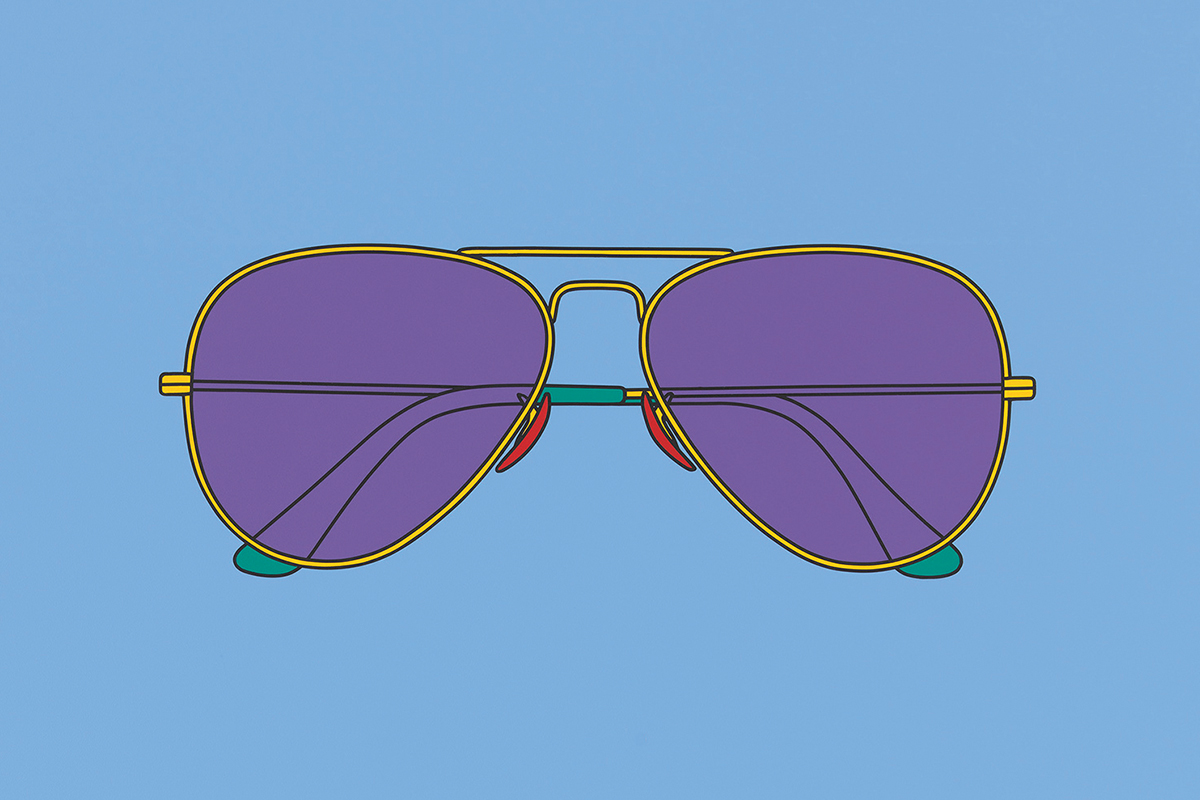
© The artist, courtesy of the artist and Gagosian. Photo Mike Bruce.
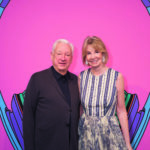 In the mid 1960s, Michael Craig Martin emerged as a key figure in early British conceptual art, later becoming the teacher of many of the YBAs such as Damien Hirst and Sarah Lucas. Today, he is one of the world’s most prominent artists, known for his brightly coloured paintings and sculptures of everyday objects. Millie Walton speaks with him about colour, style and listening to his own advice
In the mid 1960s, Michael Craig Martin emerged as a key figure in early British conceptual art, later becoming the teacher of many of the YBAs such as Damien Hirst and Sarah Lucas. Today, he is one of the world’s most prominent artists, known for his brightly coloured paintings and sculptures of everyday objects. Millie Walton speaks with him about colour, style and listening to his own advice
1. By focusing on everyday objects, are you searching for a kind of universality?
Everyday objects do seem to me to offer a path to understanding the universal. By making drawings of as many objects as I can, one by one, I have tried to implicitly account for everything. I have discounted all the hierarchies by which we normally categorise things: size, use, materials, social importance, aesthetic quality, monetary value, moral worth, etc. I draw everything the same way, each with equal care and attention – a democracy of images.
2. Do you recreate the objects from memory or are they drawn from life?
I never draw from memory, only from the observation of an individual object.
3. Are the objects you use as subjects artworks in themselves?
With a few exceptions, such as Duchamp’s urinal or Magritte’s pipe, the objects I draw are not artworks. My drawings of them are.
Follow LUX on Instagram: luxthemagazine
4. You’ve said before that incorporating colour into your work was a breakthrough moment. How so?
I discovered that I could unsettle the familiarity of the drawing of an object by introducing non-naturalistic, wayward, intense colour. The drawing is logical, general, bland, familiar; the colour instinctive, specific, vivid, unexpected. This confrontation gave my work a new visual impact and emotional intensity.
5. In aiming for what you’ve termed ‘no style’, you have created a style that is now widely recognised as yours. Has this changed your attitude towards what style means?
Yes. I used to look on style as a kind of self-conscious ‘arty’ signature. Now, I see that it can be the manifestation of the essential characteristics of one’s visual language.
6. Did teaching art at Goldsmiths College affect your own practice?
Yes, because, at best, I saw my teaching as virtually an extension of my practice. One thing I discovered was to always listen to the advice I was giving my students, as it was often the advice I wished to hear myself, but couldn’t do so directly.
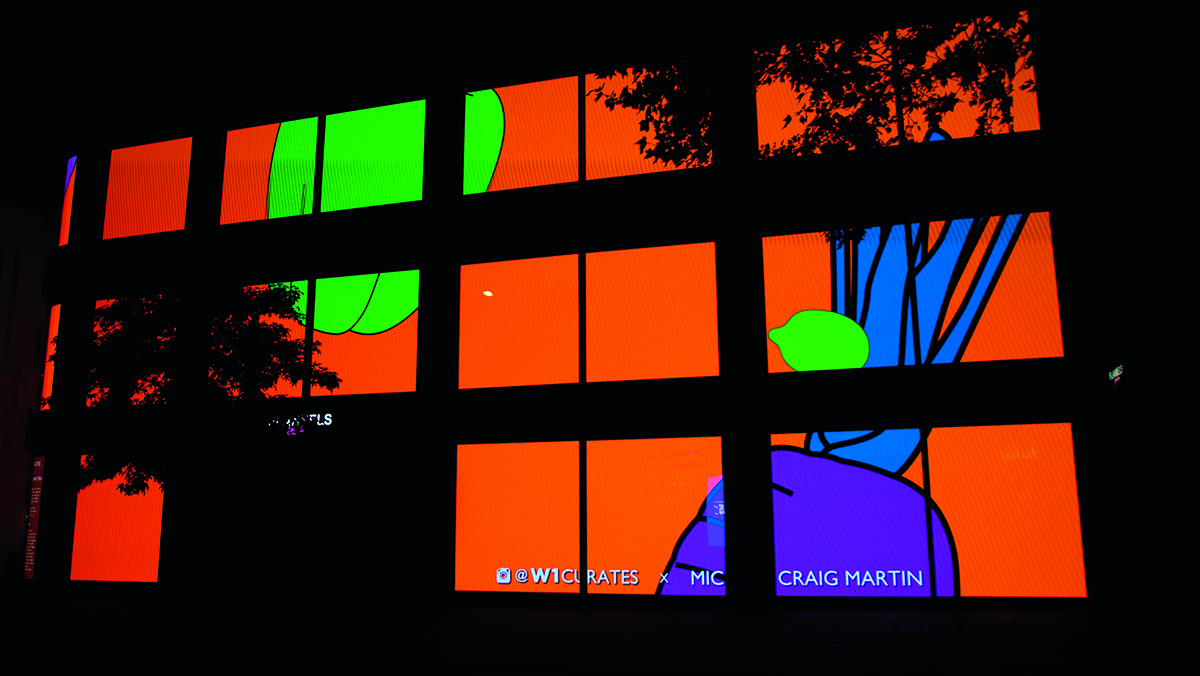
Michael Craig Martin, Oxford Street Installation. © The artist, courtesy of the artist and Gagosian. Photo Mike Bruce.
7. How do you decide what to create next?
My work is a continuum. I work on many things at the same time. One thing leads to another. Work comes from work.
8. Is it important for you to be surrounded by your own artworks?
It’s not important, but I am happy, these days, to have some works hanging in my own apartment. In general, I quickly lose interest in a work I’ve just completed because I’m working on something else. I don’t like having much finished work in the studio, but I often do. Unexpectedly coming across something you did years ago, and have forgotten, can be very rewarding.
9. Are you interested in exploring more digital tools within your practice?
I have done quite a lot of digital work over the years, the first in 2000, I think. I develop all my work on a computer and what I do is well suited to digital productions. There are things one can do digitally involving change and movement that other mediums don’t allow.
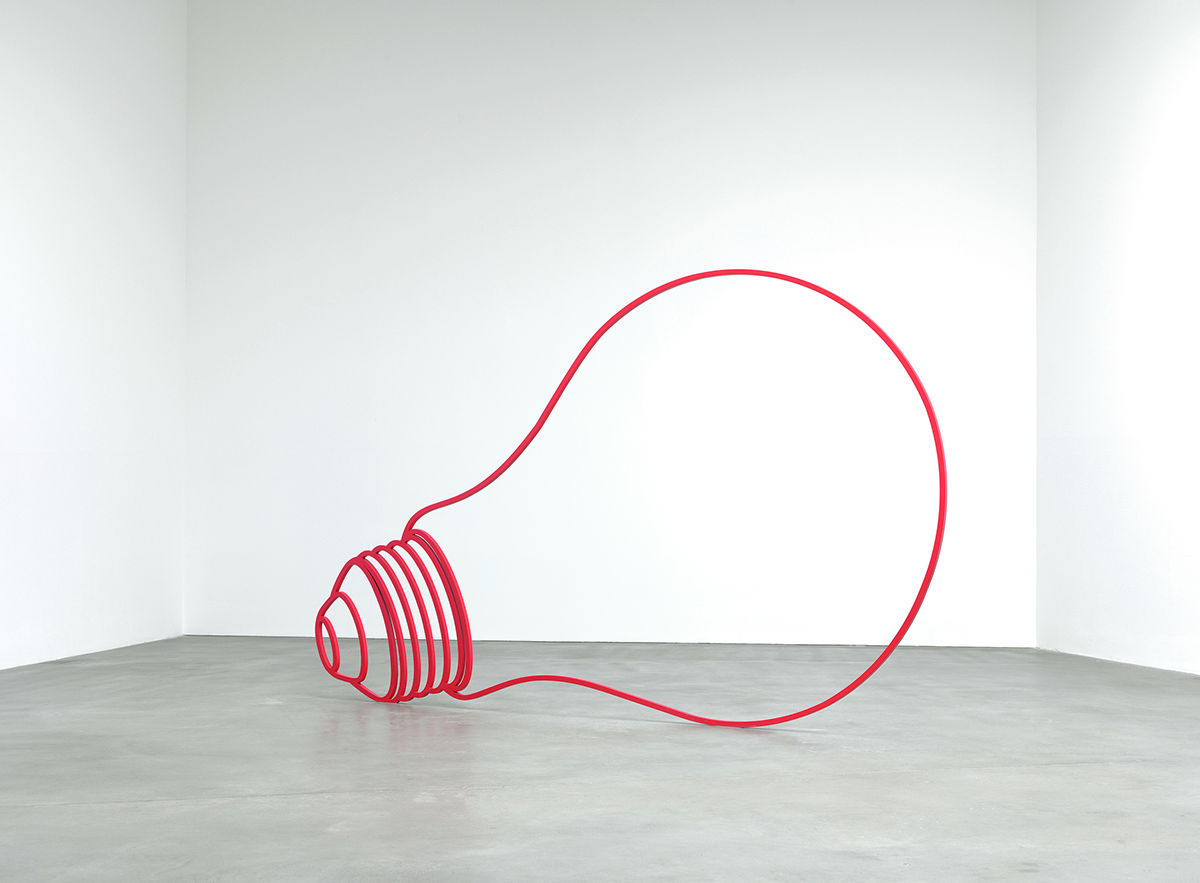
Michael Craig Martin, Bulb (red), 2011 © The artist, courtesy of the artist and Gagosian. Photo Mike Bruce.
10. Do you create commissioned work?
I always consider commissions. Some I accept, some I don’t. It’s interesting to consider something you wouldn’t have thought of yourself.
11. What led you to transform your drawings into transparent sculptures?
Two-dimensional images normally need a material ‘ground’ (paper, canvas, screen and so on) to exist at all. Making my drawings out of steel means they can be self-supporting and therefore dispense with the need for a ‘ground’, thus appearing transparent.
12. Are your works intended to provoke a particular reaction in the viewer?
I try to make work that catches the eye and the imagination of as many viewers as possible. I never seek a particular reaction, but try to provide the provocation for individual, personal speculation.
This article was originally published in the Autumn/Winter 2021 issue.



